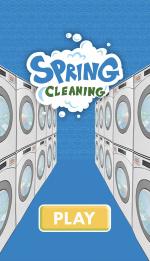CHICAGO — While gathering customer feedback is essential, how dry cleaners respond to, and then act upon, that information can make the difference between success and stagnation.
In Part 1 of this series, we examined some ways that some dry cleaners solicit feedback from clients. Today, we’ll look at how they put that information into action.
Positives and Negatives
Every business owner likes to hear nice things about their company, but negative feedback can be just as important, if not more so, for improving operations.
“I have a 4.9 (review) average,” says David Meyer, owner of Elite Cleaners in Phoenix, Arizona. “We don’t get a lot of negative feedback, but if we do, I’m on it right away. I check emails as late as 3 in the morning. So, if it’s an issue that we can correct, we get on it immediately. We own it, whatever problem there is, and we have an expression: ‘What can I do to make it right?’ My negatives are low, but they can help me correct the problem. I’m very happy to get a review, good or bad, because it either tells me we’re doing our job right or if we’re not, I try to find a way to correct it.”
“Me, my dad and my sister, Clare, all get the direct feedback and the reviews straight to our email,” says Mark Harris, who operates Oceanside Cleaners in Jacksonville, Florida with his father, Michael and his sister, Clare. “If there is something negative or needs to be addressed, we’ll do a quick huddle and decide who’s going to tackle it.”
“Honestly, I don’t care about the positive ones — that’s almost the expectation,” Michael Harris says. “Mark and Clare respond to everyone. I focus on the negative ones. Of our reviews, 99% are positive. But when we get a negative one, I personally tackle it myself.”
When Meyer does get a negative client review, especially if it calls into question a CSR’s performance, he makes sure to use it as a learning opportunity for himself and his staff.
“I’m very careful to analyze if the issue was foreseeable or unforeseeable,” he says. “Could the CSR have handled things differently? I would say in 99% of the cases, it’s a teaching moment. I analyze what the CSR could have done better, and we have a discussion about it.”
Putting Feedback into Action
Of course, feedback doesn’t accomplish much if owners don’t take it to heart and act on complaints or suggestions.
“We had a customer this week who was questioning why we couldn’t service his route more often,” Michael Harris says. “And I started thinking about it and thought, ‘Yeah, we can try that.’ So, we’re considering in January starting to go every day out to this certain market.”
Getting customers to offer feedback and suggestions requires creating an atmosphere where they know their opinions are valued.
“We want to open up communication,” Mark Harris says. “We believe in that strongly with our CSRs. You ask the customers one question about their family, their occupation, their recreation and their dreams. Not all customers — you have to feel the room and see if they want to talk — but a lot of times that’ll open up other conversations about dry cleaning and laundry, because not everybody wants to talk about it.”
Not every bit of feedback is actionable, Meyer believes. While it’s welcomed, sometimes there might not be a solution to the customer’s problem.
“We’re not afraid to ‘fire’ customers,” he says. “With a negative review, either there’s a valid point and we address it, apologize for it and make it better, or we realize that we can’t make that customer happy, no matter what — there are customers like that.”
Even if that’s the case, Meyer believes that there doesn’t need to be animosity in the discussion.
“The CSR has the ability to explain to the customer that maybe we’re not a good fit,” he says. “We haven’t done that a lot, but whenever it happens, we evaluate whether we were wrong or the customer is impossible. If they’re impossible, then we just suggest they find another cleaner.”
What Exactly Do Customers Want?
“One misconception we frequently see is that all customers prioritize speed and convenience above all else,” says Christopher White, executive director of America’s Best Cleaners (ABC), which offers professional consulting services. “While this is true for some, particularly those using kiosks or home delivery, our 25 years of data show that clients with high-end garments often value a personalized, detail-oriented luxury level of service far more.”
To accomplish this personalized experience, White believes that cleaners need to strike a balance between using technology to serve convenience-focused customers while ensuring premium clients receive the care they’ve come to expect.
“This care includes personalization, authentic greetings and knowledge of textiles and fashion to provide sound guidance of service offerings,” White says. “This starts with hiring people who are naturally friendly and get pleasure out of serving others.”
Come back Thursday for the conclusion of this series, where we’ll examine what secret shopping efforts can reveal about a drycleaning company’s effectiveness, and how to ask customers the right questions. For Part 1, click HERE.
Have a question or comment? E-mail our editor Dave Davis at [email protected].






































































